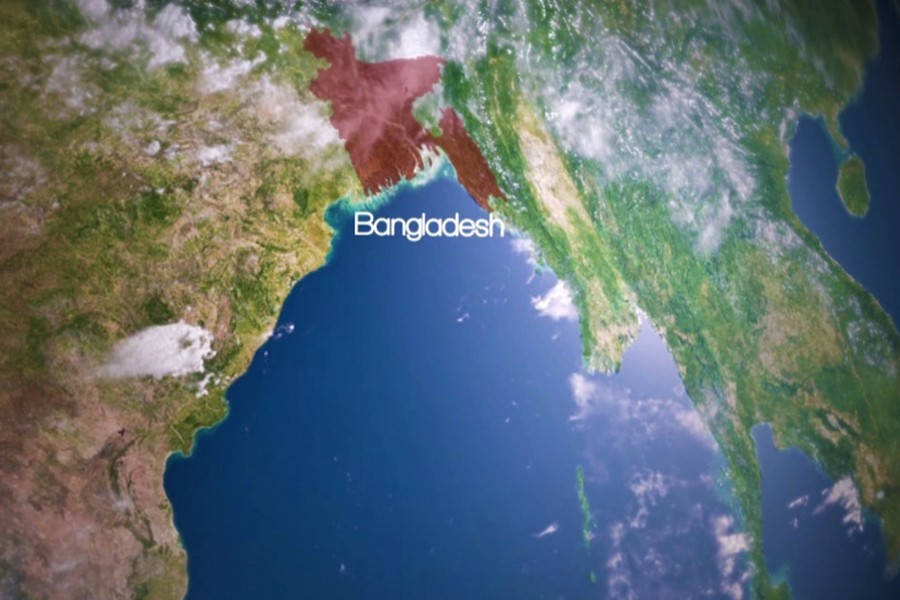
Published :
Updated :

Sea-level rise has become a headache for most nations, particularly for those with long coastal belts. The rise lately has already been concerning because its rates have been higher than in the past 2,700 years. Even the prediction of 0.2m rise by the year 2050 made by the Intergovernmental Panel on Climate Change (IPCC), co-authored by 200 scientists from 66 countries, may fall far short of the actual rise because of a combination of nations' failure to reduce CO2 emission and the consequent faster ice cap melting, frequent natural turmoil like storm, cyclone and change in the speed of sea currents.
As if these were not enough trouble, a new international study now points to the fact that coastal cities in Asia and South-east Asia are actually inviting further danger to their existence. Satellite images of 48 coastal cities processed all across the world from 2014-2020 showed that those were sinking because of extraction of underground water to meet the burgeoning demand of growing city populations. The median rate of subsidence for those urban centres was estimated at 16.2mm a year. But it is highly concerning for Asian cities, some of which recorded subsidence as high as 43 mm a year.
Before this study with which were involved a team of international scientists led by a PhD fellow at the Nanyang Technological University of Singapore, the issue of subsidence of large urban centres in coastal areas was not taken into cognisance. When the coastal cities' highest rate of sinking at 43 mm is taken into account against the global mean sea-level rise at 3.7 mm, the extent of danger facing those urban settlements can be gauged. Worsening climate change will only exacerbate the process of sea-level rise further and the existential threat to the coastal cities.
As the growth centre and area of rapid urbanisation, Asia, more particularly South-east Asian countries with sea front, faces the greatest threat. Bangladesh's port city Chattogram along with Vietnam's Ho Chi Minh City, India's Ahmedabad, Indonesia's Jakarta and Myanmar's commercial hub Yangon are facing the gravest threat because of the excessive load they put on the soil they sit on and make the matter worse by drawing water from underground aquifers beyond sustainable limit. It is not for nothing that the IPCC has warned that more than one billion people living in coastal cities will find themselves severely affected by sea-level rise by 2050. Given the subsidence of cities, this may happen earlier than the time foreseen by the IPCC.
The question is, how grave the threat is. Will inhabitants from these coastal cities be compelled to move away and their living abodes abandoned? In some cases such an ominous possibility cannot be ruled out. When cities in the coastal areas will suffer such reversals, its ripple effects will be adverse not only on lives and livelihoods of people living in and around those urban centres but also on the economies. If even parts of Chattogram, Ho Chi Minh, Yangon cities go under water, the international commercial transactions Bangladesh, Vietnam and Myanmar carry will be badly affected. Also, makeshift and fragile settlements that grow around commercial centres will be the early victims.
Experts in earth sciences and civil environmental engineering have suggested building up of coastal defences like sea walls or nature-based redress such as mangroves. But to address the subsidence of cities proper, there has to be a strategy to stop using groundwater and instead find an alternative like surface water and also developing a mechanism for recharging of aquifers preferably by pumping used water into the underground. Rain waters can as well be collected for domestic use and recharging of aquifers. This refers to research and technological innovation to overcome the supply crunch of water not just in coastal cities but also in megalopolises like Dhaka.
nilratanhalder2000@yahoo.com


 For all latest news, follow The Financial Express Google News channel.
For all latest news, follow The Financial Express Google News channel.